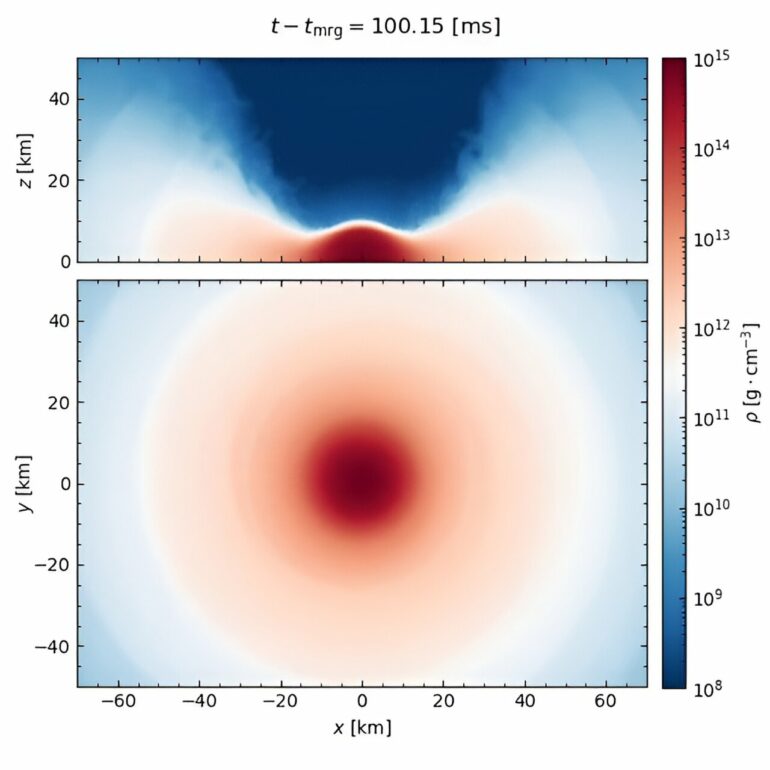In the aftermath of a collision of neutron stars, a new celestial object called a remnant emerges, shrouded in mystery. Scientists are still unraveling its secrets, including whether it collapses into a black hole and how quickly this might happen.
Scientists at Pennsylvania State University have used supercomputer simulations with general-relativistic neutrino-radiation hydrodynamics to understand the internal structure of these neutron star merger remnants. They also studied how the remnant cools down by emitting neutrinos.
By observing when neutron stars merge in space, scientists gain insights into how nuclear matter behaves under extreme conditions that cannot be replicated on Earth.
Nuclear matter is a hypothetical substance made up of protons and neutrons held together by the strong force. Of particular interest to scientists is whether the pressure from the strong force can stop black holes from forming.
For the study published in The Astrophysical Journal, scientists used the computational resources available through the Department of Energy’s National Energy Research Scientific Computing Center, the Leibniz Supercomputing Center in (Germany), and the Institute for Computational and Data Science at Pennsylvania State University.
The researchers found that neutron star merger remnants consist of a central object endowed with most of the mass of the system, surrounded by a ring of hot matter in fast rotation that contains a small fraction of the mass but a large fraction of the angular momentum.
Unlike most stars, the inner remnant has a higher temperature on its surface than in its core, so convective plumes are not expected to form as the remnant cools down by emitting neutrinos.
This research is a starting point for identifying the astronomical signals that could help answer questions about neutron stars and black hole formation.
More information:
David Radice et al, Ab-initio General-relativistic Neutrino-radiation Hydrodynamics Simulations of Long-lived Neutron Star Merger Remnants to Neutrino Cooling Timescales, The Astrophysical Journal (2023). DOI: 10.3847/1538-4357/ad0235
Provided by
US Department of Energy
Citation:
What happens to the remains of neutron star mergers? (2024, August 7)



